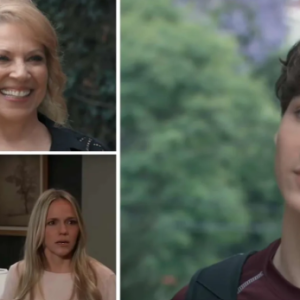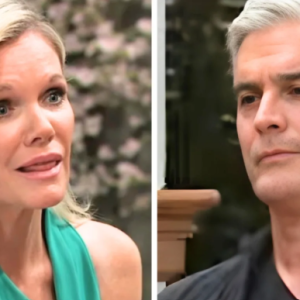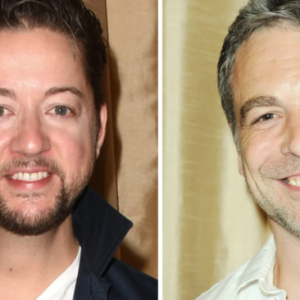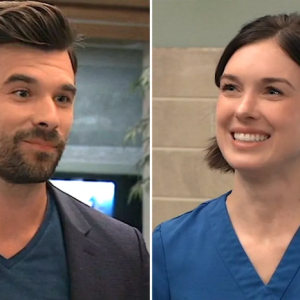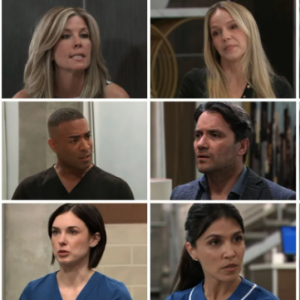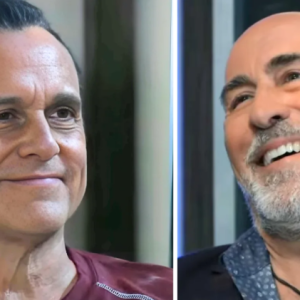Prepare for a raw and emotionally charged journey into the depths of mental anguish and fractured love in General Hospital: The Movie! The film opens with Willow Tait (Katelyn MacMullen), reeling from her decision to leave Drew Cain (Cameron Mathison) at the altar, plunging into a deeply “delusional” and unstable state. Her desperate attempt to reconnect with her children leads to a brutal confrontation with Michael Corinthos (Rory Gibson), who remains cold and unforgiving. As Willow’s mental state deteriorates, the movie hints at a shocking possibility of reunion, but a devastating secret concerning Sasha Gilmore (Sofia Mattsson) and Daisy (unseen character) threatens to obliterate any chance of healing, even as the enduring power of love lingers beneath the surface!

Willow’s Spiral: A Bride Abandoned, a Mother Desperate
The movie thrusts viewers into the immediate aftermath of a shocking altar abandonment. Willow Tait, having just left Drew heartbroken at the wedding, immediately spirals into what the narrative starkly describes as “just about as delusional as ever!” Her first desperate act is to run “straight to Carly’s” home, where she “just about flipped out trying to see her kids.” This emotional outburst reveals the depth of her distress and her intense longing for her children.
Michael Corinthos, the father of her children, is forced to intervene. He “dragged her out of the house and realized she’s more unstable than ever.” This pivotal moment solidifies Michael’s perception of Willow’s mental state, leading him to a chilling conclusion: “He doesn’t think he can ever trust Willow with the kids again.” This severe judgment from Michael creates a seemingly insurmountable barrier between them, making any form of reconciliation appear impossible.
The narrative emphasizes Willow’s profound imbalance. Even beyond “the screaming, the yelling and the near catatonia,” her “delusion” is most starkly highlighted by her belief that “there was suddenly a chance that Michael would take her back.” This complete misreading of Michael’s current feelings underscores just how far removed from reality Willow has become.
But the most devastating blow, both for Willow and for the audience, is the looming revelation of her past actions. The movie ominously foreshadows “the devastation that’s sure to come when he learns what Willow did to Sasha and Daisy.” This dark secret, hinted at with chilling ambiguity, promises to be a catastrophic turning point, potentially destroying any glimmer of hope for Willow’s future with her children or Michael. The nature of these actions against Sasha and Daisy is left deliberately vague, building immense suspense and dread for the inevitable reveal.

A Glimmer of Hope: Michael’s Inner Conflict
Despite Willow’s severe mental decline and Michael’s seemingly unforgiving stance, the movie introduces a surprising ray of hope – a possibility that a reunion, however unlikely, “isn’t impossible.” This intriguing contradiction is explored through an interview with Rory Gibson, the actor who plays Michael.
When asked by Michael Fairman about the chances of Michael and Willow ever finding their way back together, Gibson admits, “I think there’s a very real possibility.” This admission from the actor himself adds a profound layer to Michael’s character, suggesting a depth of emotion that belies his current cold exterior. Gibson elaborates on the complexity of his portrayal: “Even though the things that they’re going through are insane, and seems like they’re only getting pushed further and further apart, I can’t play the scenes the way that they should be played without realizing that there’s love there.” This insight into Michael’s internal world suggests a powerful, lingering affection for Willow, even amidst the chaos.
The movie emphasizes the profound history shared between Michael and Willow, a bond too deep to simply vanish. “They’ve shared too much not to still feel that somewhere. A marriage, happy memories, a family, kids.” These shared experiences act as an unbreakable tether, pulling at Michael’s heart, even when his mind dictates otherwise. “Michael remembers who Willow once was.” This memory of a healthier, stable Willow is crucial; “That may not be who she is now, but it’s clear that a big part of this is mental instability.” This assessment frames Willow’s actions not as malice, but as the tragic result of a shattered mind.
The narrative firmly establishes that “Willow’s not evil. She’s not a mustache-twirling villain. Her mind has kind of snapped.” This crucial distinction shifts the audience’s perspective from condemnation to empathy, suggesting that her current state is a medical condition rather than a character flaw. The most hopeful statement is that this mental state “is something that can be worked on and healed.” This opens the door to a potential journey of recovery for Willow, hinting that “She could always be brought out of this chasm of insanity that she seems to have fallen down into and get back to being the Willow that Michael fell in love with.” This provides a compelling long-term arc for her character, rooted in a possibility of redemption and healing.

The Enduring Power of Love: A Path to Forgiveness?
Gibson further elaborates on the enduring nature of Michael’s feelings, even in the face of Willow’s alarming behavior. “Whenever I go into those really intense scenes with Katie [MacMullen], I always keep that in mind where it’s like, ‘Hey, you once really, truly, deeply loved this person. That’s not going to go away no matter what happens.'” This speaks to the powerful and often irrational nature of love, suggesting that such deep emotional bonds are not easily severed. “It’s a human reaction. You’re going to hold on to that forever regardless of what they do.”
Michael’s internal struggle is defined by this persistent love. “You can be mad at them,” he said. “You can be upset at them. Your dynamics and relationship can change, but in a sense that love will always be there.'” This powerful sentiment hints that despite the current animosity and Willow’s instability, the foundational love between them remains, creating a potential pathway for future reconciliation.
The movie concludes with a powerful, yet cautious, message about the possibility of their reunion: “And where there’s love, there’s a way.” However, the path forward is fraught with immense challenges. “But Willow would need a whole lot of help to ever get her back to the point of being stable enough to make it work!” This emphasizes the critical need for professional intervention and a long, arduous journey of recovery for Willow. Furthermore, “Michael would have to be willing to do some serious forgiving.” This highlights the emotional baggage and the profound betrayals he has endured. The film acknowledges the immense hurdles: “That’s something we don’t see happening any time soon.”
While the movie presents a glimmer of hope for “Millow,” it frames any potential reunion as a distant and incredibly difficult endeavor, dependent on Willow’s recovery and Michael’s ability to forgive the pain she has caused, especially the yet-to-be-revealed actions concerning Sasha and Daisy. The audience is left with the agonizing question of whether their enduring love can truly conquer the overwhelming obstacles of mental illness and past betrayals.
